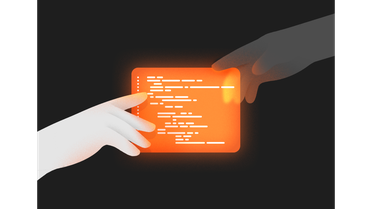
Using Polyfills to Bridge Gaps in Serverless Edge Environments
Polyfills ensure compatibility across serverless edge environments, enabling developers to use modern web features without sacrificing functionality.

MAR 7, 2025 • 6 min read

Building Modern Serverless Runtimes
Discover how modern serverless runtimes built with Rust and V8 isolates outperform Node.js in performance and security, delivering faster execution times and enhanced memory safety through memory-safe architecture.
FEB 7, 2025 • 8 min read


How Technology Can Help You Comply with Regulations for Fintech
Edge computing provides robust security, regulatory compliance, and intelligent monitoring for reliable, scalable operations.
FEB 6, 2025 • 8 min read


Enhancing Data Management with Azion's Edge Storage
Explore Azion Edge Storage: a direct S3 API compatible object storage solution offering scalability, no egress charges, and serverless architecture for improved data management and application performance.
MAY 9, 2024 • 8 min read


Enhancing Edge Functions Debugging with Azion CLI Logs
Explore how to debug and monitor edge functions using Azion CLI with real-time logs. Master command usage for local and network edge insights.
MAY 9, 2024 • 6 min read


Boost Software Quality: Local Development with Azion CLI
Master Edge Functions with Azion CLI for local development and testing. Enhance software security, optimize performance, and streamline debugging.
APR 19, 2024 • 8 min read


Azion Console Kit: Building a new interface
Explore the Azion Console Kit, enhancing user interface for Edge Computing with innovative Azion Blocks and open source toolkits for robust app development.
FEB 21, 2024 • 6 min read


The Experts Speak: Cybersecurity Quotes About Zero-Trust, WAF, Social Engineering, and More
Explore expert insights on cybersecurity, Zero Trust, social engineering, and WAF capabilities at Azion Edge.
FEB 1, 2024 • 7 min read


Leverage the Power of Edge Computing with Azion's New Set of Templates
Discover Azion's Edge Computing templates to enhance web app development, streamline deployment, and optimize performance with tools like MongoDB, Hexo, and Fauna.
JAN 29, 2024 • 5 min read


Azion Celebrates a 2023 Full of Achievements
Discover how Azion's accolades like the Frost & Sullivan Award and Great Place to Work recognition affirm its edge computing superiority in 2023.
DEC 21, 2023 • 6 min read


Azion Recognized as a Strong Performer in Edge Development Platforms by Forrester
Discover why Azion is a strong performer in The Forrester Wave™ for Edge Development Platforms in Q4 2023, enhancing enterprise edge solutions.
DEC 1, 2023 • 3 min read


Reference Among Scaleups, Azion Receives Award at Santander X Global Challenge
Azion wins at Santander X Global Challenge for innovative cybersecurity solutions, enhancing global security capabilities and fostering industry connections.
NOV 29, 2023 • 2 min read


Remember Zero-Day Attacks Blocked by Azion's WAF
Explore how Azion's Web Application Firewall provides robust defense against zero-day attacks, CVE-2021-41773 coverage, and WAF bypass prevention.
NOV 6, 2023 • 4 min read

Subscribe to our Newsletter
Get the latest product updates, event highlights, and tech industry insights delivered to your inbox.